Ultimate Guide: Gold vs. Platinum - A Comprehensive Comparison

Let’s be honest: choosing the right metal for your jewelry is almost like picking a life partner. Do you go with the tried-and-true classic that everyone knows and loves—the warm glow of gold? Or do you opt for something rare, cool, and mysterious, with a touch of extra weight to keep things grounded? Sure, we’re talking about metals here—not people—but the decision feels just as significant (and trust me, it might last just as long!).
Maybe it’s the rich, radiant glow of gold that captures your heart, or perhaps the natural, understated sheen of platinum speaks to you. Choosing between these two metals goes beyond looks; each one has its unique traits, pros and cons, and its own "maintenance schedule." So whether you’re after a wedding band that’ll stand the test of time or a statement piece that says "This is me," let’s dive into the ultimate showdown between gold and platinum to help you find your perfect match.
Table of Contents
▼Gold Vs Platinum Brief Overview
Gold
Gold has symbolized wealth and beauty for thousands of years. From ancient Egyptian royalty to modern-day style icons, gold is beloved by all. It comes in three hues—yellow, white, and rose—and often contains alloys like silver or copper for added strength. Gold purity is measured in karats, with 24k being the purest (and softest) grade.
Platinum
Platinum, one of the rarest metals on earth, is both precious and exclusive. Pure platinum jewelry typically contains around 95% platinum, making it heavier and more durable than gold without compromising on shine. Its natural silvery-white color has made it a favorite for engagement rings and wedding bands, as it complements all skin tones beautifully.
Interesting Fact: According to a survey by The Knot, 65% of couples choose platinum over gold for engagement rings because it’s exceptionally durable and low-maintenance.
Gold Vs Platinum Appearance

When it comes to appearance, gold and platinum each bring something different to the table.
Gold Vs Platinum: Look
Gold offers a variety of colors—yellow, white, and rose. Yellow gold has a timeless, classic appeal; white gold provides a sleek, modern look (although it’s often plated with rhodium and may need replating); and rose gold offers a romantic, vintage-inspired tone that has become a trendsetter in recent years.
Platinum, however, has a natural silvery-white color that never tarnishes or fades, eliminating the need for plating. Its cool, modern aesthetic suits those who love a minimalist yet luxurious look.
Patina
Over time, platinum develops a natural patina—a subtle matte finish that gives it a slightly antique appearance. Some people love the rustic character this adds, while others prefer to polish it back to a high shine. Gold, especially white gold, may require occasional replating to maintain its original brightness, particularly with daily wear.
Example: If you’re drawn to a vintage-inspired design, yellow or rose gold can add warmth and character. On the other hand, if you prefer a sleek, modern style that requires minimal maintenance, platinum’s unique patina may be just right—adding depth and character over time without frequent upkeep.
Gold vs. Platinum: Durability and Maintenance

When investing in jewelry, durability and maintenance are key considerations.
Platinum’s Durability
Platinum is known for its exceptional durability. When scratched, the metal is displaced rather than lost, helping retain its weight and structure. This makes it an excellent choice for rings worn daily. Studies by the Platinum Guild International found that platinum jewelry lasts longer with less visible wear and tear than gold, especially for people with active lifestyles.
Gold’s Durability
Gold’s durability depends on its karat level. Higher karat gold, such as 24k, is softer and scratches easily, while 18k or 14k gold is alloyed for added strength. White gold, often plated with rhodium for a bright silver finish, may require re-plating every few years to maintain its appearance. Gold’s resilience, especially in lower karats, makes it suitable for jewelry worn regularly, but it might not withstand rough wear as well as platinum.
Practical Example: Imagine a mechanic who wears their wedding ring every day. A platinum band would likely endure better through daily use and scratching compared to a high-karat gold ring, which could show wear more quickly and may require maintenance or replacement sooner.
Gold Vs Platinum Cost Comparison 
It goes without saying that cost is always an important factor, and the price of gold and platinum can vary quite a bit.
Gold Vs Platinum Initial Cost
Platinum rings are generally more expensive because platinum is rare and very dense. For instance, a platinum engagement ring could be up to 1.5 to 2 times the cost of the same style in 18k gold. Current prices indicate that platinum is about $980 an ounce, whereas gold is approximately $1,800 an ounce.
Gold Vs Platinum Long-Term Value
Both metals maintain their value, but platinum's high purity and density contribute to its lasting worth. Gold also retains its value and is relatively easy to sell, but platinum typically has a higher resell value due to its rarity and resistance to tarnishing. Platinum does not lose any of its metal when scratched; it retains all its weight. Conversely, gold can lose metal over time due to scratches and polishing.
Gold Vs Platinum Weight and Comfort
When it comes to daily wear, weight and comfort are key factors in choosing the right metal.
Platinum’s Weight
Platinum’s high density gives it a noticeable weight when worn. Some people love this substantial feel, considering it a mark of luxury. However, for those sensitive to heavier jewelry, this added weight may make platinum less comfortable for daily wear, especially in larger pieces.
The Advantage of Lighter Gold
Gold is generally lighter, making it more comfortable for larger or everyday jewelry like necklaces, earrings, or bangles. Its lighter weight can be especially appealing for those who prefer jewelry that feels less noticeable throughout the day.
For smaller pieces like rings and pendants, platinum’s weight may be less noticeable and could add a sense of refinement. Meanwhile, gold remains a popular choice for bigger statement pieces like hoop earrings or chunky bracelets, as it’s easier to wear all day without feeling weighed down.
Gold Vs Platinum Hypoallergenic Qualities
If you have sensitive skin, hypoallergenic properties are a critical factor.
Platinum’s Hypoallergenic Nature
Platinum is naturally hypoallergenic and is an excellent choice for those with skin sensitivities. Due to its high purity, it rarely causes skin irritation, making it ideal for rings, earrings, and other jewelry worn closely against the skin.
Gold’s Alloys
Gold itself is generally hypoallergenic, but lower-karat gold alloys, particularly in white gold, may contain nickel, which can irritate sensitive skin. People with allergies might prefer higher-karat gold or platinum.
Logical Debate: While platinum may be ideal for sensitive skin, some argue that hypoallergenic alloys in gold (like palladium in white gold) have made gold just as suitable for most people with sensitivities. Ultimately, it depends on individual reactions and preferences.
Gold Vs Platinum Value Retention and Resell
When investing in jewelry, it’s natural to consider its resell potential.
Resell Value of Platinum
Platinum’s rarity and density contribute to its resell value. Since platinum jewelry retains its weight over time, its value often remains strong.
Resell Value of Gold
Gold’s market liquidity often makes it easier to sell. Its value is universally recognized, making it a reliable asset. Gold jewelry can be sold based on karat and weight, providing a more predictable resell value.
Final Decision: Gold or Platinum?
Ultimately, the decision between gold and platinum depends on personal preferences, lifestyle, and budget.
Choose Platinum If...
- You need a durable, low-maintenance metal.
- You have sensitive skin and prefer hypoallergenic options.
- You appreciate the modern, natural silver tone of platinum.
Choose Gold If...
- You want a color variety (yellow, white, rose).
- You’re looking for a lighter, more budget-friendly option.
- You prefer a classic or vintage-inspired style.
Conclusion
Choosing between gold and platinum is about more than looks; it involves considering durability, comfort, cost, and even the metal's compatibility with your skin. While gold offers timeless warmth and versatility, platinum provides unparalleled durability and a distinct modern sheen.
Both metals are classic investments that can suit different tastes and lifestyles. So, are you ready to find your perfect match? Whether you’re leaning towards gold or platinum, each has its charm and value to offer. Happy jewelry shopping!
FAQs
Gold vs platinum jewelry: Which metal is better for daily wear?
Platinum is heavier and more durable, while gold is lighter and may be more comfortable for larger pieces. The choice depends on personal preference and sensitivity.
Differences between gold and platinum for engagement rings?
Platinum is rarer and more durable, while gold comes in various colors but may require more maintenance. Both have unique aesthetic appeals.
Is platinum more durable than gold for jewelry?
Yes, platinum is denser and more resistant to scratches and wear, making it a more durable option for everyday jewelry.
Pros and cons of choosing gold or platinum for wedding bands?
Gold is lighter and more affordable but less durable. Platinum is hypoallergenic and durable but heavier and typically more expensive.
Gold vs platinum: Which metal has a higher resell value?
Platinum usually has a higher resell value due to its rarity, although gold can also be a reliable investment depending on market conditions.
How does platinum’s weight compared to gold in jewelry?
Platinum is denser and heavier than gold, which some people love for its luxurious feel, while others prefer the lighter weight of gold for comfort.
Maintenance differences between gold and platinum jewelry?
Gold, especially white gold, requires regular re-plating to maintain its shine, while platinum develops a natural patina and requires less frequent polishing.
Why is platinum more expensive than gold?
Platinum is rarer and more complex to mine and refine than gold, contributing to its higher price.
What are the benefits of white gold vs platinum?
White gold is more affordable and sleek but needs regular maintenance, whereas platinum is more durable and hypoallergenic but more expensive.
Gold vs platinum: Which metal is better for sensitive skin?
Platinum is generally better for sensitive skin as it is hypoallergenic, while gold can cause reactions due to alloying metals like nickel.

.png?v=74971505631319126241739980080)

.png?v=170379015109479064061739980109)
 Solitaire Ring
Solitaire Ring
 Accent Ring
Accent Ring
 Halo Ring
Halo Ring
 Bridal Set
Bridal Set
 Toi-Moi Rings
Toi-Moi Rings
 Three Stone Ring
Three Stone Ring
 Five Stone Ring
Five Stone Ring
 Pave band
Pave band
 Eternity Band
Eternity Band
 Bezel Set
Bezel Set
 Channel Set
Channel Set
 Studs and Earrings
Studs and Earrings
 Bracelet
Bracelet
 Necklace
Necklace
 Men's jewelry
Men's jewelry
 Brilliant
Brilliant
 Old Cut
Old Cut
 Step Cut
Step Cut
 Matching Pair
Matching Pair
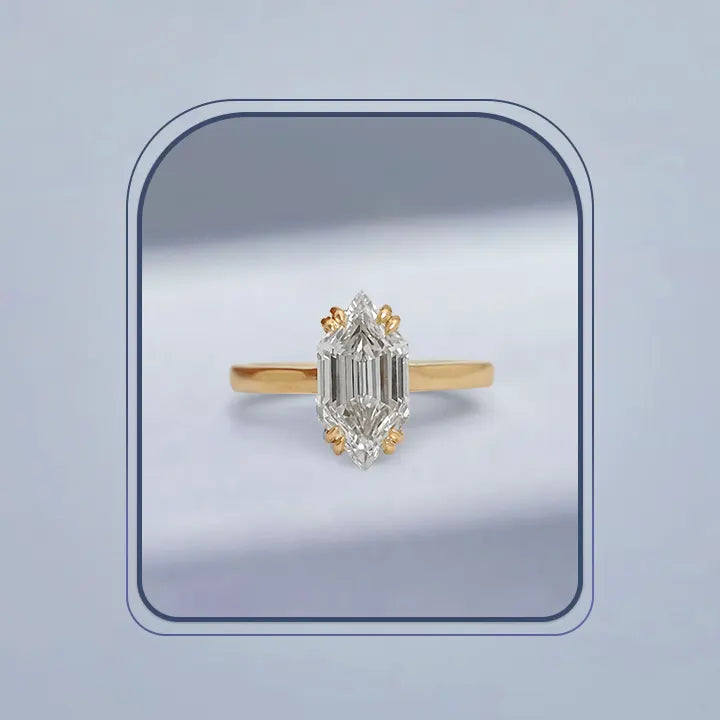
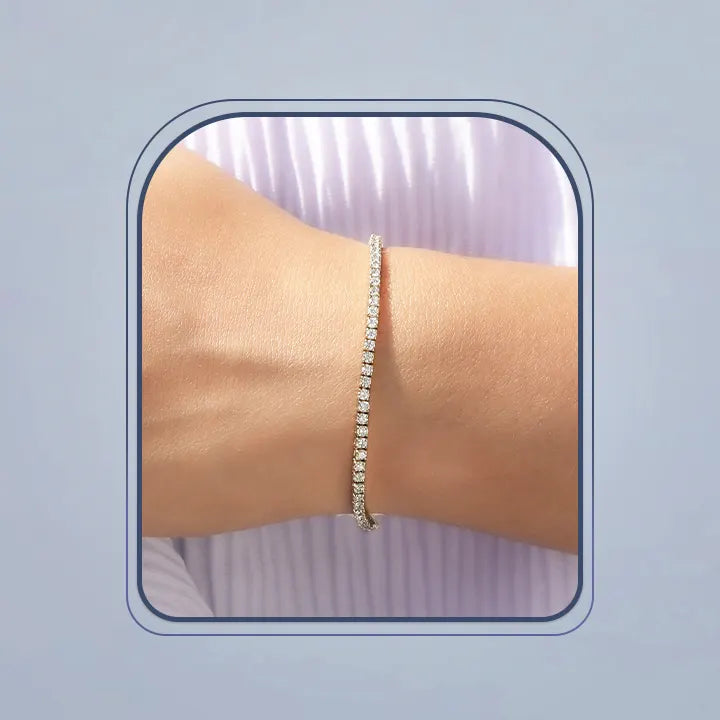
 Vintage Ring
Vintage Ring
 Dainty Band
Dainty Band
 Gemstone Jewelry
Gemstone Jewelry
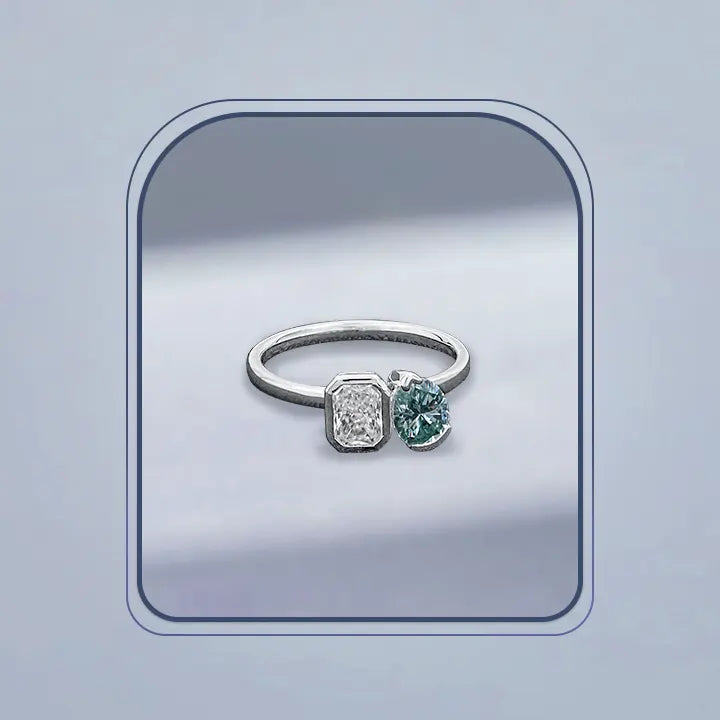
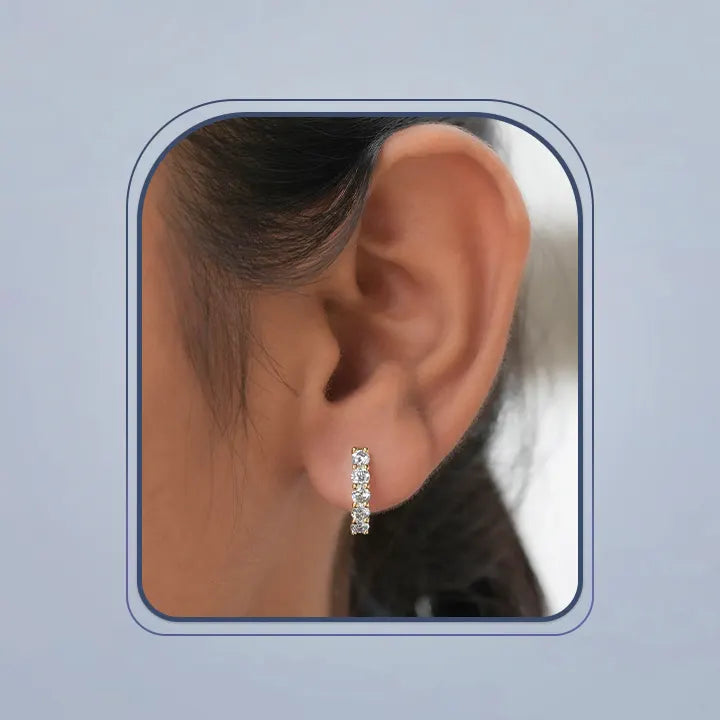
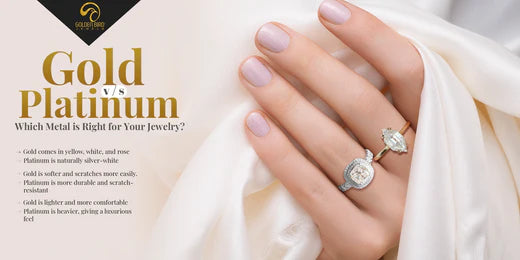
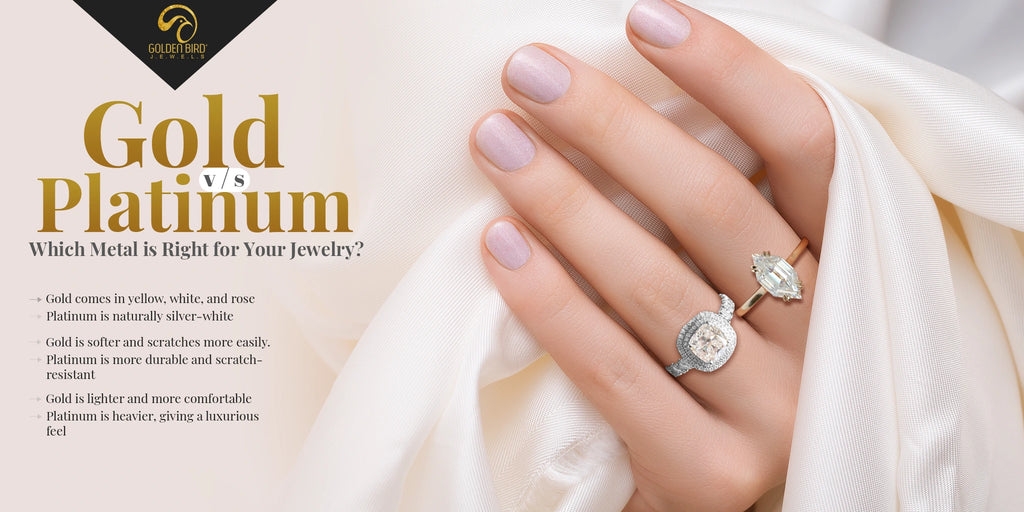






![[Which hand to wear a promise ring]-[Goldenbird Jewels]](http://www.goldenbirdjewels.com/cdn/shop/articles/Which_hand_to_wear_a_promise_ring_1024x1024.webp?v=1735388893)
![[How To Care For Your Moissanite Engagement Ring]-[Goldenbird Jewels]](http://www.goldenbirdjewels.com/cdn/shop/articles/banner_image_1_1024x1024.jpg?v=1735364626)

![Image of engagement ring and wedding band with couple indulging in romance at the beach, [Text] Engagement ring and wedding band, whiich goes first](http://www.goldenbirdjewels.com/cdn/shop/articles/Banner_Image_2_1024x1024.webp?v=1735283814)


